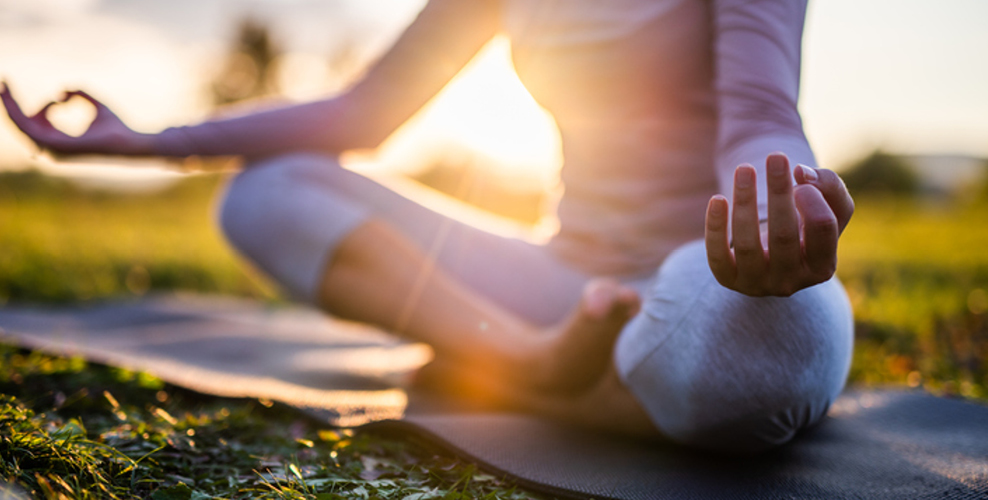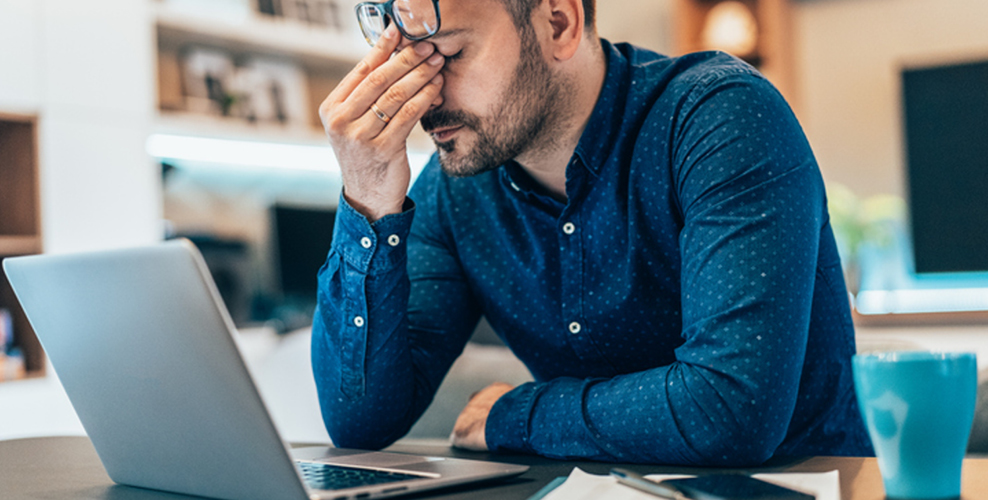Mindfulness, meditation and mapping out the New Year

Mindfulness is about presence without judgment - not fixating on the past or worrying about the future. It's a state of awareness of all your current thoughts and feelings, whether physical or emotional. Mindfulness can be defined as "both self-regulation of attention to one's current experience and a particular orientation towards this experience, characterised by curiosity, openness, and acceptance".1
A regular mindfulness practice can help to relieve stress and promote calmness and clarity of thought. Mindfulness has even been reported to help with feeling greater satisfaction and optimism1 - something I'm sure most of us could use more of in the New Year!
If you're looking to set healthy goals for the New Year, read on for some practical, daily mindfulness tips you can introduce in 2023.
Mindful eating
Since most of us do it several times a day, eating is a great way to introduce mindfulness into your daily life. The benefits can't be understated and include better digestion and a reduced tendency to overeat or to snack when you're not hungry. Your body even absorbs nutrients more effectively when you eat mindfully!2
Eating mindfully can easily become a good habit, so here's a quick run down on how to do it:
- Remove distractions - TV, your phone, or even a book all distract you from the task at hand and make it nearly impossible to be mindful while eating
- Slow down and check in with your thoughts and the physical sensations in your body. If you're feeling tense, take a few deep breaths before sitting down to eat
- Use your senses to tap into mindful eating, bring yourself into the moment and get your digestive juices going. It's as easy as looking at your meal, noticing the colours and other details, smelling the aromas of your meal and then totally tuning into what your taste buds are experiencing
- Chew, chew, chew! This not only aids digestion but also keeps you focussed on one thing, eating!
Check in with your body
The mind can be tricky, but the body will always tells it like it is. A body scan meditation can help you to notice areas where you might be holding tension. Scanning the body can help you to get in touch with physical sensations, take a break from racing thoughts or worries, and bring you back to the present moment. Even a very quick check-in with your body and breath can be enough to bring you back to a state of mindfulness. This mindfulness technique is great if you struggle with sleep issues.3
Choose physical activities that require you to focus on the technique and the sensations in your body. Whether that's swimming laps, a high-intensity interval training (HITT) workout or yoga (a favourite of mindfulness practitioners everywhere for good reason), movement is your friend in the pursuit of staying present.
Conscious consumerism
Breaking the habit of spending on items you don't need can be helped by a daily mindfulness practice.4
Being a conscious consumer isn't just about considering the impacts your purchases have on the environment. Conscious consumerism as a mindfulness practice can help to reduce susceptibility to needless spending.

Be an active listener
Actively listening to the person talking to you isn't just respectful, it can have some great personal benefits. Practicing mindful presence when you're having a conversation can help to nurture closer relationships and encourage better recall later on. Head here for some handy tips for being a proactive listener.
Practicing active listening can even prevent negative self-talk from sneaking in as it sometimes does when you're focussing on your own thoughts and not the person talking!5
 Mind your technology use
Mind your technology use
Boundaries aren't just for work colleagues and family members - you can also set healthy boundaries with your technology. In these modern times we have to make a conscious effort to rein in the amount of time we spend watching or reading the news, answering emails, looking at notifications and mindlessly scrolling through social media.
The truth is, it's difficult to ever do this perfectly - but the point is to do it mindfully. There are many easy ways to swap your current technology habits for ones that help you create better boundaries over time. These may include using the 'Do not disturb' function on your phone and only switching it on after a morning meditation, or having designated hours in the day where you're screen-free.

Technology for good
Technology addiction and overuse of technology are sadly leading to isolation in a world where everyone is so digitally connected. So, it's no wonder that app designers have jumped at the chance to fight fire with fire and create apps to help encourage mindful technology use.
From limiting overall screen time or the time spent on social media to stress-relieving meditation and mindfulness apps, there are some great tools available to help you create distance from technology when it's becoming overwhelming.
If you're looking forward to beginning a mindfulness practice for the New Year, check out this quick guided mindfulness meditation series to help get you started.
References:
- Gregoire S, et al. International Journal of Wellbeing 2012;2(3).
- Monro J.T. American Journal of Lifestyle Medicine 2015;9(3).
- Winston D. Mindful 2019. Accessed December 2020 from https://www.mindful.org/a-body-scan-meditation-to-help-you-sleep/
- Rosenberg E.L. In Kasser, T. & Kanner, A.D. (Eds.), Psychology and consumer culture: The struggle for a good life in a materialistic world (p.107-125). American Psychological Association.
- MindTools. Accessed Dec 2020 from https://www.mindful.org/a-body-scan-meditation-to-help-you-sleep/
















